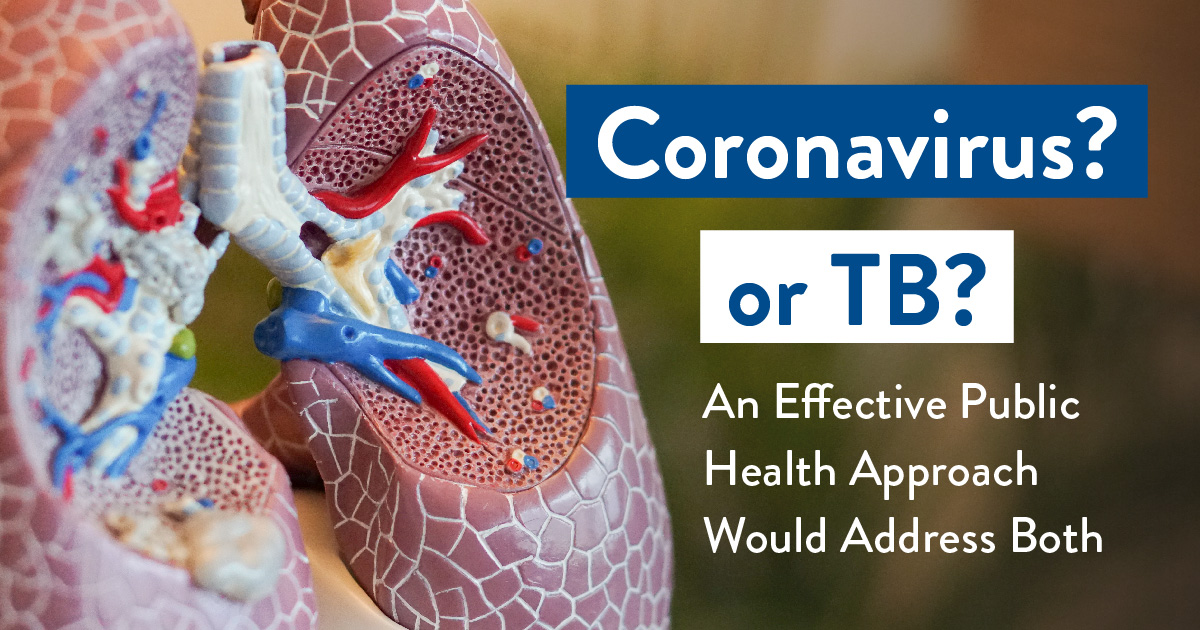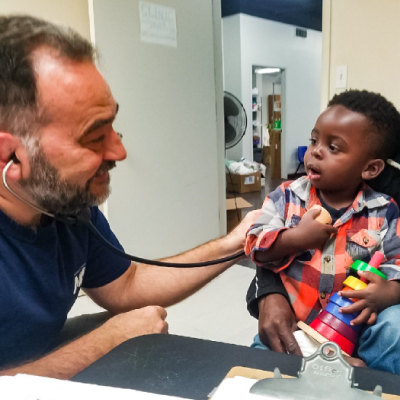- Who We Are
- Clinician Employment
- Publications
- Witness to Witness (W2W)
- Kugel & Zuroweste Health Justice Award
- Your Voice Matters: Photovoice Project
Tue, 03/24/2020 | by Edward Zuroweste


By Ed Zuroweste, MD, Founding Medical Director, and Laszlo Madaras, MD, MPH, Chief Medical Officer
You’ve heard about the symptoms before. It can at first seem like the flu -- fever, night sweats, fatigue -- but it’s the persistent cough that wears people down. This terrifying infectious disease has already spread all over the world -- and it’s deadly. It kills more people than any other infectious disease, including HIV/AIDS or Ebola or influenza. Over 1.6 million people are predicted to die of this disease, this year alone. And another 1.6 million next year. And millions more in the coming decade -- unless we do something urgently about it.
Oh, wait -- that’s not coronavirus. That’s the work of tuberculosis.
The coronavirus dominates headlines, and for good reason: governments and businesses are taking drastic measures to slow its spread. We don’t know how many people will die of the coronavirus this year. Too many factors influence the eventual outcomes: effectiveness of and adherence to social distancing; potential vaccine development; government and health system approaches. But the death toll from tuberculosis, which one can catch when an infected person coughs, releasing TB bacteria in the air, is a certainty. Because it has lurked in every corner of the globe since ancient times, tuberculosis isn’t top-of-mind for anyone outside of global public health -- but TB kills millions, and doesn’t have to.
TB can be eliminated. With moderate action, at a much smaller scale than the quarantines we’re seeing for coronavirus, we could drop the tuberculosis death rate from 1.6 million people to nearly zero. Over the course of one decade of elimination, that means millions of young children reaching their teens instead of being buried. It will allow millions of people who suffer from HIV/AIDS the chance to live longer, productive lives. TB is one of the top five killers of women aged 20 - 59; TB elimination means millions and millions of children having their mother alive during their childhood. Here’s how we do it:
- Prevent TB, by treating people who are infected but not actively sick. People with latent tuberculosis infection (LTBI) have the bacteria lying dormant in their system. About one in 10 will switch to active TB, where they can spread it. People with LTBI can be treated to kill the bacteria before it becomes active, which will greatly reduce the spread of TB.
- Effectively treat those with active TB. TB can be cured, with fairly inexpensive and widely available treatments. “Effectively” means “completely” -- but many people do not complete their treatments because of poverty, mobility, or other barriers. The spread of multidrug-resistant TB is a result of treatments cut short. TB bacteria then build resistance to firstline drugs. Public health systems need to ensure treatment completion, through strengthened and nimble case management and outreach. Migrant Clinicians Network’s case management system, Health Network, for example, helps migrant patients with TB continue treatment even when they move to another part of the globe.
- Expand TB research: TB treatments have improved in recent years, shortening the treatment length, which reduces the burden on those who are ill. But the treatment is still lengthy and with side effects. While case management can remove certain barriers to treatment, we need to bring down the barrier of the treatment itself by developing medications to make treatment regimens shorter and easier and widely available, better point-of-service diagnostic tools, and an effective vaccine which will be the most important tool if we are truly going to reach worldwide elimination of this global scourge.
Stopping coronavirus’s advance is a public health priority. We aren’t advocating to backtrack on the commitments made to reduce the impact of coronavirus, nor to downplay its dangers. In fact, a patient who has tuberculosis infection in their lungs would be expected to be more vulnerable to the more deadly effects of coronavirus, and vice-versa. We can use this coronavirus pandemic, however, as an opportunity to launch a holistic long-term approach to public health, as an ongoing priority, not simply as an emergency response mechanism, that addresses TB, coronavirus, and other major killers, simultaneously.
Today is World TB Day, but this may be the only headline you see on the deadly disease. We don’t want tuberculosis to tank the stock market or empty grocery store shelves. We are looking for a wider approach to public health, wherein the necessary resources are directed worldwide to address the greatest needs, and TB is at last eliminated. It is in our reach.
Like what you see? Amplify our collective voice with a contribution.
Got some good news to share? Contact us on our social media pages above.
Return to the main blog page or sign up for blog updates here.







